Submerged structures are exposed to the risk of water ingress. This is the case with concrete structures such as the pillars of bridges or buildings, but also plastic / metal composite structures such as flexible submarine riser pipes in offshore oil and gas operations.
Here are some links found on the Internet that clearly explain the issues surrounding this phenomenon:
- http://cementaid.co.uk/salt-water-and-corrosion-resistant-concrete/
- https://www.researchgate.net/publication/267794029_MOISTURE_PENETRATION_IN_CONCRETE_SUBJECTED_TO_RAINFALL_EFFECT_OF_INTENSITY_AND_DURATION_OF_EXPOSURE
- https://www.sciencedirect.com/science/article/pii/S1877705815018433/pdf?md5=81e1dec815b24ef9896f23318b597cfb&pid=1-s2.0-S1877705815018433-main.pdf
- https://mcedd.com/wp-content/uploads/04_Yann%20Nicolas%20-%20Technip.pdf
- https://www.researchgate.net/publication/267621629_Annulus_Testing_for_Condition_Assessment_and_Monitoring_of_Flexible_Pipes
- https://mcedd.com/wp-content/uploads/2017/Proceedings/08/MCEDD-2017-TechnipFMC-OMesnage.pdf
The Fish probe designed and produced by Sciensoria uses an electromagnetic method to monitor the degree of water infiltration in an underwater structure. Its operating principle is inspired by fish, hence its name “Fish”. Indeed, many fish develop an electric field around them for real-time monitoring of their environment. A presence of prey or predators in the vicinity is immediately reported and treated.
Sciensoria deploys a continuous effort in research and development to move forward on this subject. The latest Fish version captures minute variations within a radius of several centimeters. This range is sufficient to pass through the thickness of the sheath of flexible submarine oil or gas riser pipes.
The Fish probe associated with its electronics which constitutes the heart of the Z-Scope * vn2k20 device forms a very powerful tool for investigating the phenomenon of water flooding of underwater structures. This electronics is very small and can be easily integrated into a special box to go into the depths.
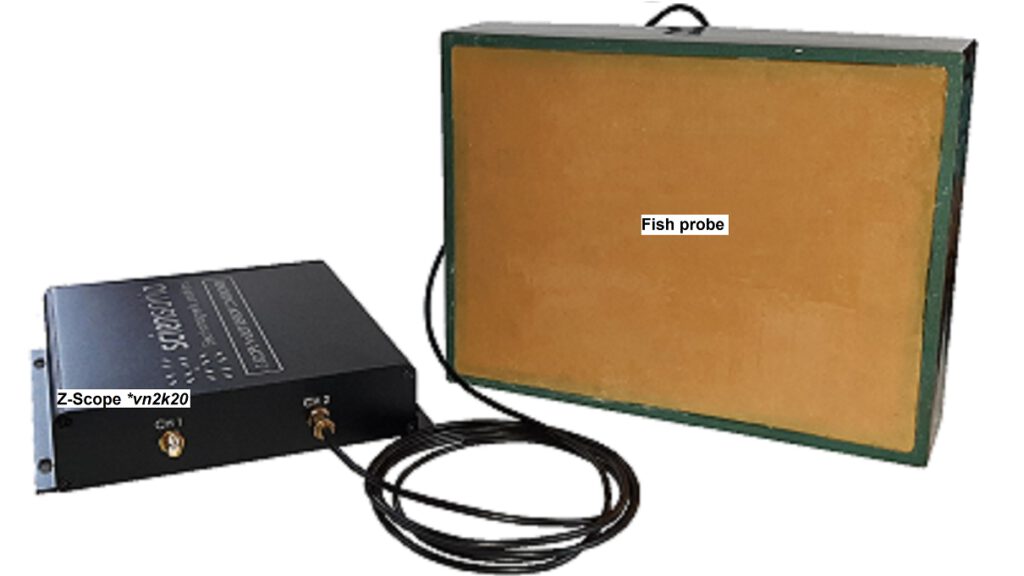
Z-Scope * vn2k20 device and the new version A-series Fish probe
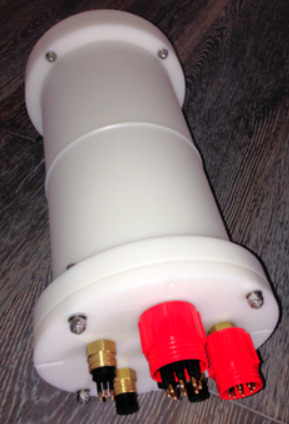
Underwater housing for electronics
The video below demonstrates the sensitivity of the latest version of the Fish transducer in salt water. A bag containing a steel plate is placed behind a 50 mm thick epoxy-glass (FR4) plate. The whole is immersed in salt water to simulate a plastic / metal composite structure submerged in the sea.
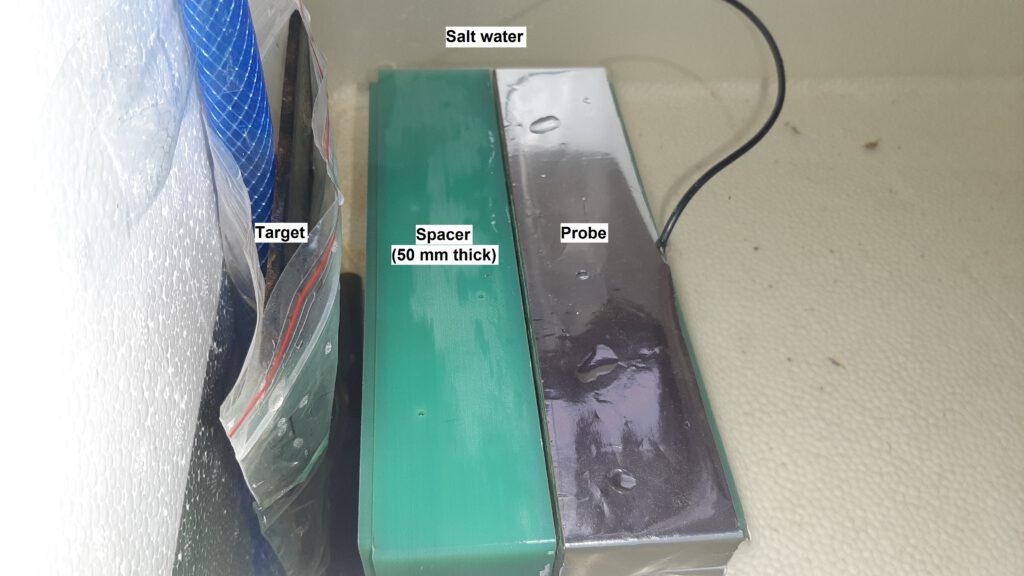
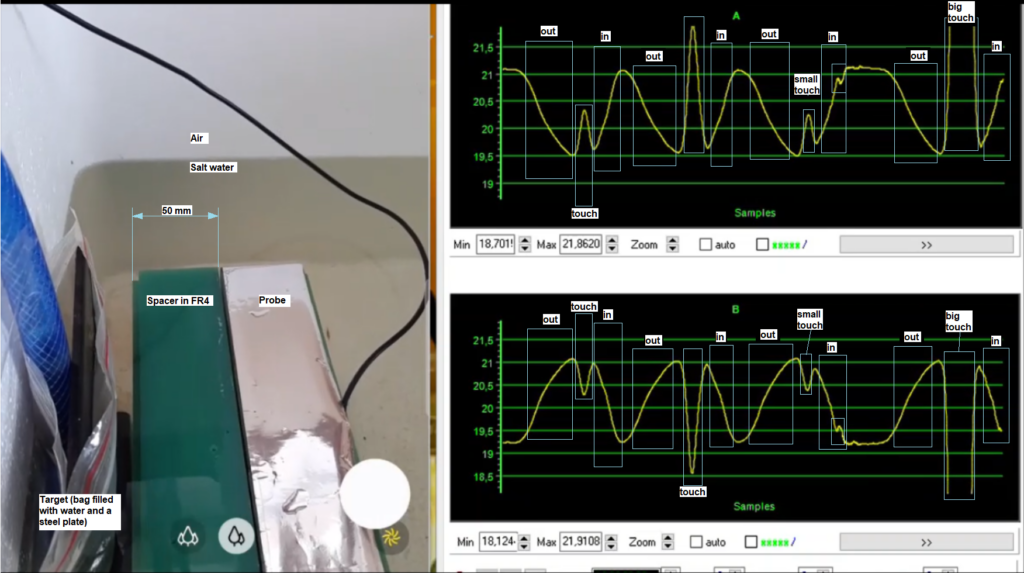
Details of the experiment and the signals obtained from the Fish probe
Water is pumped into the bag and then withdrawn periodically. The Fish probe is placed on the other side of the FR4 plate to monitor the inlet and outlet of water. The signals provided by the probe show very well the progressive entry and exit of the water as well as certain very interesting ancillary phenomena. For example, when the sachet swells to the point of touching the FR4 interlayer, there is a drastic variation in the signals in the opposite direction to that of the variation in the water level. This could be explained by the fact that the FR4 plate was pushed towards the Fish probe. We see there a possibility of observing 2 phenomena at the same time: the 1st is the variation of the water level in the bag, and the 2nd is the distance between the probe and the plate in FR4.
The Fish probe could be used for flood detection of flexible underwater oil and gas riser pipes. See below.
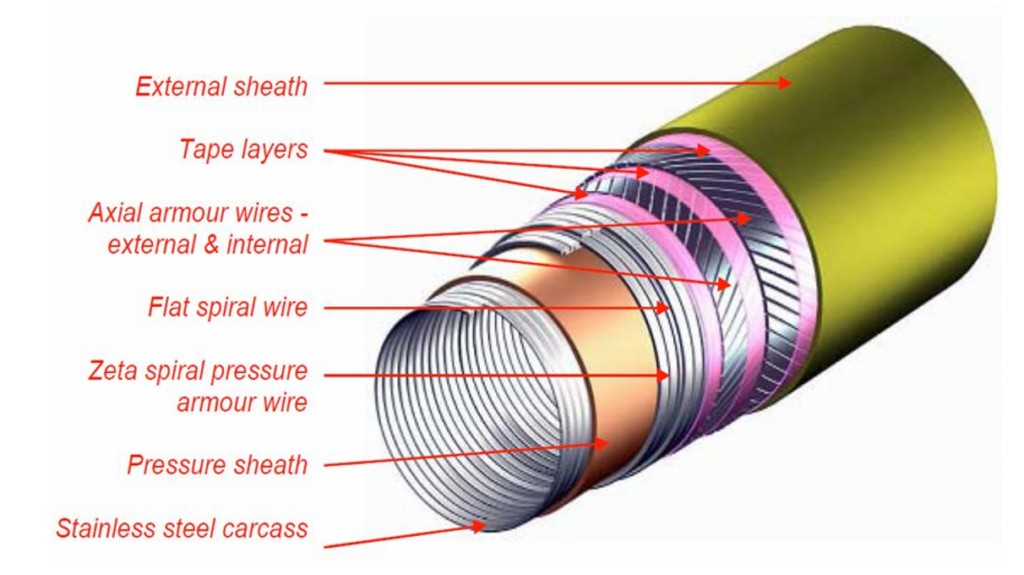
Structure of a flexible submarine oil and gas riser pipeline
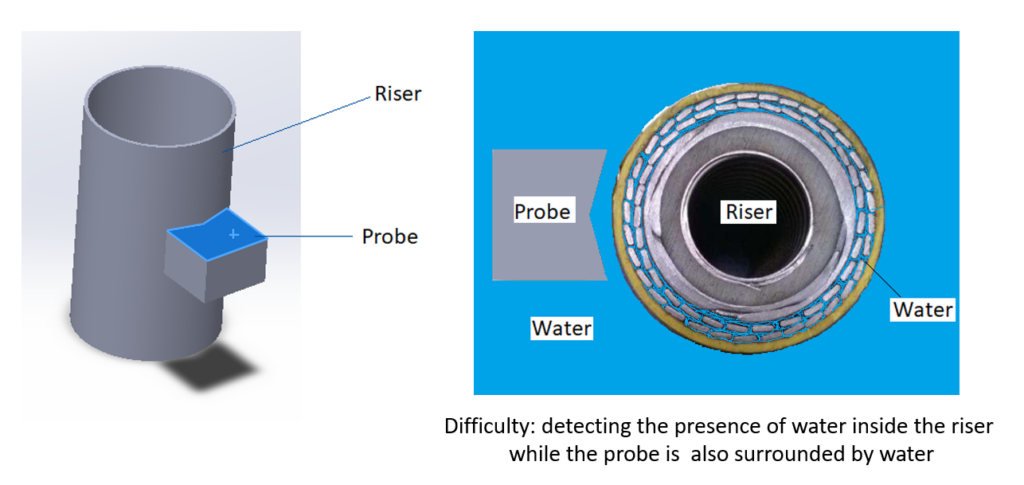
Flood detection under the sheath of a flexible underwater oil and gas riser pipeline
See also: https://www.sciensoria.fr/en/non-destructive-testing-of-non-conductive-materials/
Contact us at info@sciensoria.fr for more details.
